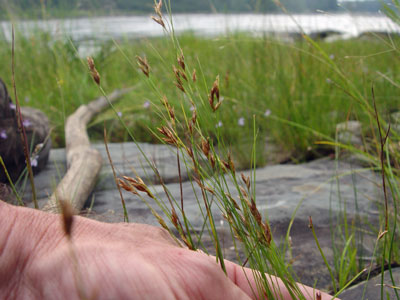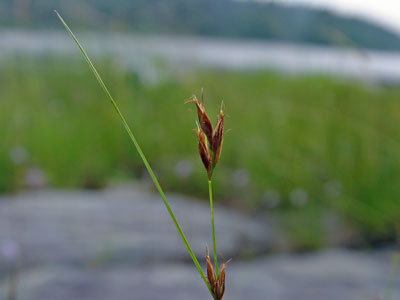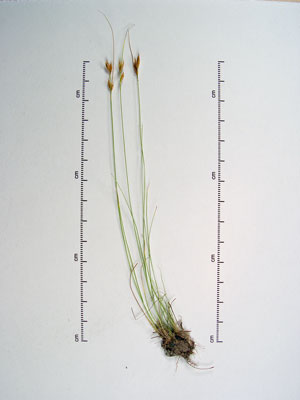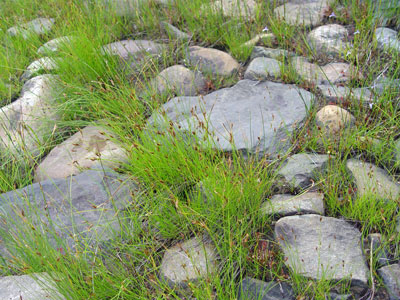DACF Home → Bureaus & Programs → Maine Natural Areas Program → Communities, Plants, and Animals → Rare Plants → Rhynchospora capillacea

Rhynchospora capillacea Torr.
Horned Beak-rush
- State Rank: S1
- Global Rank: G4G5
- State Status: Threatened
Habitat: Calcareous swamps, bogs, and shores. [Open wetland, not coastal nor rivershore (non-forested, wetland); Non-tidal rivershore (non-forested, seasonally wet)]
Range: Newfoundland to Saskatchewan, south to Virginia, Tennessee, and Missouri.

Aids to Identification: Beak-rushes are similar to the spike-rushes (Eleocharis) in that the acheme (i.e., single-seeded fruit) is capped by a tubercle. Beak-rushes also share in common with spike-rushes a cycle of slender bristles attached to the base of the achene. Rhynchospora has an inflorescence composed of several spikes and leafy stems versus Eleocharis which has its leafless stems terminated by a single spike. Rhynchospora capillacea is identified by its achenes 1.7-2.1 mm long that are subtended by six, retorsely barbed perianth bristles and its very narrow leaves (0.2-0.4 mm wide).

Ecological characteristics: In Maine, this species typically grows on riverside seeps, rich ledges, and sphagnum bogs.
Phenology: Flowers July - August, fruits in August.
Family: Cyperaceae
Synonyms: Rhynchospora capillaceae Torr. var. leviseta E.J. Hill.
Known Distribution in Maine: This rare plant has been documented from a total of 5 town(s) in the following county(ies): Aroostook, Kennebec.

Reason(s) for rarity: Suitable habitat is scarce.
Conservation considerations: Maintain hydrologic integrity of its rivershore or bog habitat.
For more information, see the Native Plant Trust's Conservation Plan for Rhynchospora capillacea.